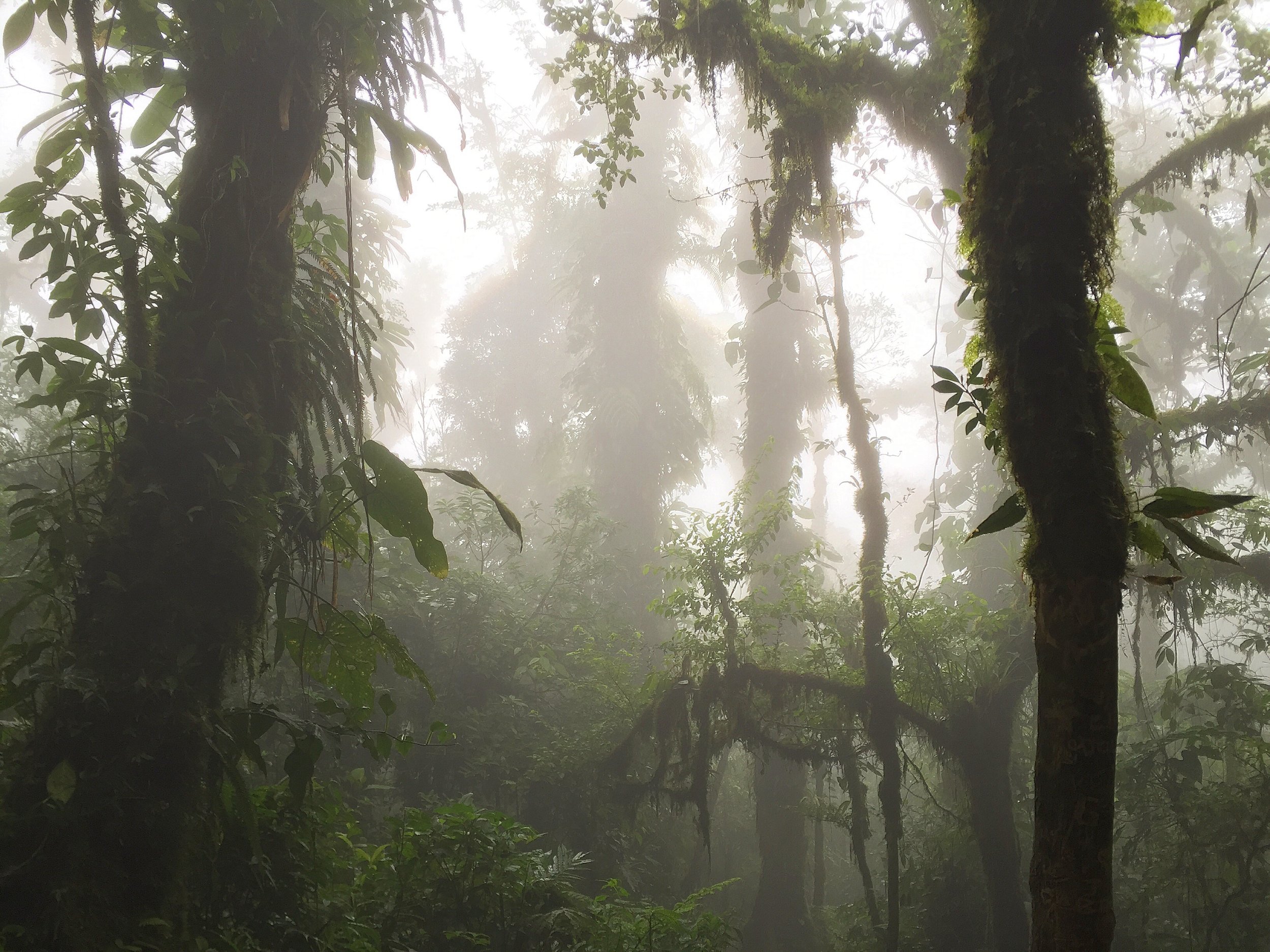About a year and a half ago, I had the privilege of hiking in a cloud forest during my first trip to Costa Rica. I have yet to witness an ecosystem type more exciting. Even if you were blindfolded for some reason, the sounds and smells alone would immerse you in an almost alien habitat. I actually went to Costa Rica during the dry season, but while exploring a cloud forest, I became drenched with sweat and forest moisture, and easily forgot what season it was. Although this ecosystem was teaming with life, like the most biodiverse place I have ever witnessed, I knew there was a hidden world I couldn’t see beneath the forest floor. As I hiked up a steep elevation gradient, I wondered how the fungal community beneath my feet was changing. Was the increased water content enhancing fungal diversity? Were the different plant assemblages manipulating the density of different fungal types? These thoughts exercised through my mind every time I thought about that legendary hike. Fortunately, I recently discovered a paper written by a few scientists with the same questions.
Cloud forests are usually found in tropical or subtropical regions that are categorized by never-ending cloud cover that persist at tree canopy height. The constant cloud cover limits the light reaching the forest floor, which in turn, makes it significantly cooler than lower areas outside of the habitat type. With so much moisture being present at the canopy, less evapotranspiration occurs. This along with lower temperatures and light levels ultimately reduces photosynthetic output. These factors make it harder for woody species to live, which is why trees here are stunted, and display a more limited diversity. Still, total species diversity found in these places is insane, containing some of the most varied assemblages of epiphytic bromeliads, bryophytes, lichens, ferns and orchids. The constant damp conditions also promote a wide array of fungal species too. Although these ecosystems are most extraordinary, they only make up 1% of the woodland areas on Earth, so it’s understandable that they haven’t been studied much. Caitlin Looby and her team couldn’t find enough answers in the scientific literature, so they decided to roll up their sleeves and conduct some research.
Picture I took while hiking in a Costa Rican cloud forest.
In Monteverde Cloud Forest Reserve, from 1,305 to 1,850 meters above sea level, twelve sites where selected every 50 meters. At each site, soil samples were taken twice. Once during the wet season, and once during the dry season. In addition, they also measured other soil properties, including temperature, moisture content, pH and carbon to nitrogen ratio (C:N). With the soil samples, DNA was extracted and amplified to see what fungal communities were present at each site. Molecular techniques where adapted from a 1996 paper that I used during my thesis project, by Brundrett which helped decipher fungal abundance.
Abiotic factors as a function of elevation in meters above sea level.
This study uncovered how abiotic factors change with increased elevation in this Costa Rican cloud forest, and how those factors interact with the living soil communities. They found that temperature significantly decreased with increased elevation, while moisture content and C:N both significantly increased in both seasons. These conditions increase fungal abundance, as hyphal length in soil samples near higher elevations are significantly longer than lower elevations. Although fungi are more abundant at higher elevations, more ancient lineages of fungi (chytridiomycota, zygomycota) dominated here. At higher, wetter, cooler regions in these ecosystems, fungal diversity actually as a whole decreases-a trend I did not expect.
C:N ratios help explain why hyphae was more abundant at higher elevations. Carbon in its recalcitrant, more inaccessible form is in high quantities within soil, while nitrogen pools are always more limiting. This means that a higher C:N ratio means there is more carbon than nitrogen. Since C:N ratio increase with elevation, nutrients become more scant, and fungi must scavenge voraciously for the little nitrogen that is present. This means, there is increased hyphal lengths in these nutrient poor, higher regions because the fungi must allocate more energy to its elongation in order to obtain the nitrogen they need. The lesson here is that just because there is an increased abundance of fungi, does not mean the habitat is more suitable. These fungi are struggling to make ends meet, which is why these regions also have a lower fungal diversity, and are dominated by lower fungi that usually make a living by parasitizing other species.
Hyphal length increases with elevation.
The only group of higher fungi that seemed to increase with elevation was ectomycorrhizal fungi (ECM). ECM abundance is also linked to C:N, because as nitrogen becomes more limited, plants send more photosynthate down their fungal symbiote so they can more sufficiently scavenge the forest floor for the nutrient they need. With decreased nitrogen in more elevated regions, plants spend more sugars while demand for N is high. This enhances the ECM biomass and diversity.
Mycena sp. found in a Costa Rican cloud forest.
All in all, the forest floor in these Costa Rican cloud forests are complex enough to make your head spin. These places are ecological gold mines that can teach us so much about the biotic world. Unfortunately, these places are becoming exceedingly rarer because of the attributes associated with climate change. Several studies show that increased sea surface temperatures make the cloud layer that usually rests at the canopy, lie a bit higher. This may sound minute, but without contacting the forest canopy, water doesn’t condense on the tree’s leaves and drip down to the forest floor below. This is increasing the number of dry days the forests see, and make them extremely vulnerable to losing its precious, fungal, plant and animal species. You really should witness a cloud forest for yourself. If you do make it to one, while hiking up an elevation gradient, you now know how the fungal community changes with the abiotic environment.







